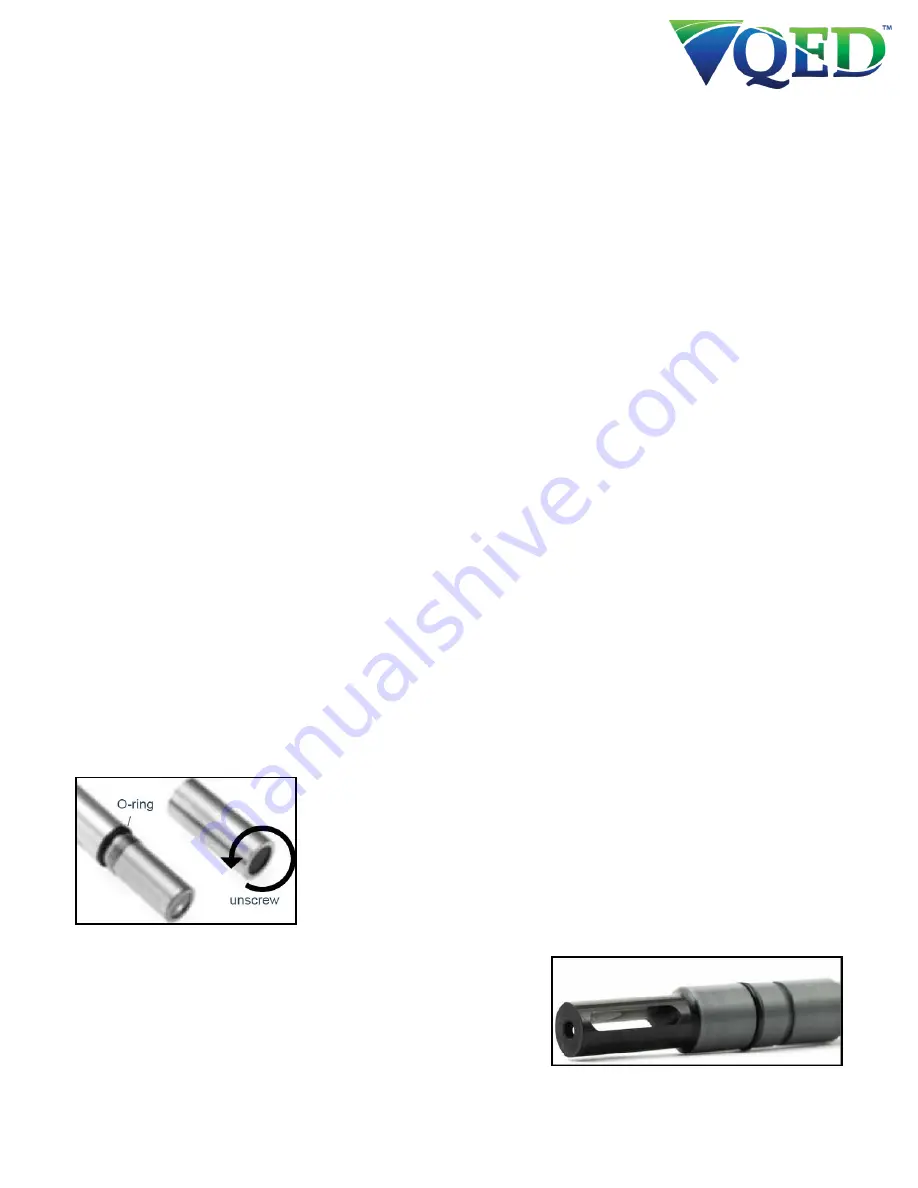
Rev: 01
P/N: 95343
Page | 12
The DO sensor can be calibrated for 100% saturation using either air-saturated water or water –saturated air.
Method 1 – Air-saturated water
1.
Make sure that the barometric pressure setting is accurate (See Section X.XX)
2.
Using a small jar or bottle with a lid, fill the container about halfway with tap water, cap it and shake
vigorously for about a minute, then remove the cap/lid and let the water stand for about five minutes to
allow air bubbles to float out.
3.
With the sonde inverted and calibration cup attached, fill the cup until the water covers the DO sensor
by about ½” (1 CM) or so.
4.
Wait 1-2 minutes for the temperature to equilibrate
5.
Follow the calibration instructions for dissolved oxygen percent saturation (HDO % Sat).
Method 2 – Water saturated air
1.
With the sonde inverted and calibration cup attached, rinse the cup with tap water and then empty
2.
Place the storage cup cap upside down (threaded end up) on top of the calibration cup
3.
Let the sonde stand in the calibration stand for 1-2 minutes for the temperature to equilibrate
4.
Follow the calibration instructions for dissolved oxygen percent saturation (HDO % Sat).
The optical DO sensor in the MP25/MP25T system can be calibrated for zero oxygen as well as saturation. To
calibrate the zero point, follow the same steps as above for air saturated water DO using one of the three
following methods:
Method 1 – use a commercially prepared DO zero calibration solution or find instructions on preparation of a
sodium sulfite and cobalt chloride solution for zero oxygen calibration..
Method 2 – prepare zero oxygen water by bubbling nitrogen through water using a compressed nitrogen gas
source at low pressure and an aquarium air diffuser stone in a bottle of tap water for about 10 minutes.
Method 3 – Set up the MicroPurge with the flow cell and pass low-pressure nitrogen gas through the cell .
Optical dissolved-oxygen sensor maintenance is no more than occasionally
cleaning the sensing surface on the tip (the black material; about a centimeter
diameter) with a small soft cloth and soapy water. The tip has a very long
service life but must be replaced periodically, usually about once every four
years. If your SRF reports less than 100% or if you notice that the sensor’s
readings are getting noisy (i.e. jumpy), then it’s probably time to change the
tip by unscrewing the old tip and replacing it with a new tip and calibrating.
Conductivity/Specific Conductance (SpC)
The MicroPurge MP25 system uses the four-electrode method to
determine water electrical conductivity. Two pairs of graphite
electrodes are situated in a stable geometry. A constant voltage is














































